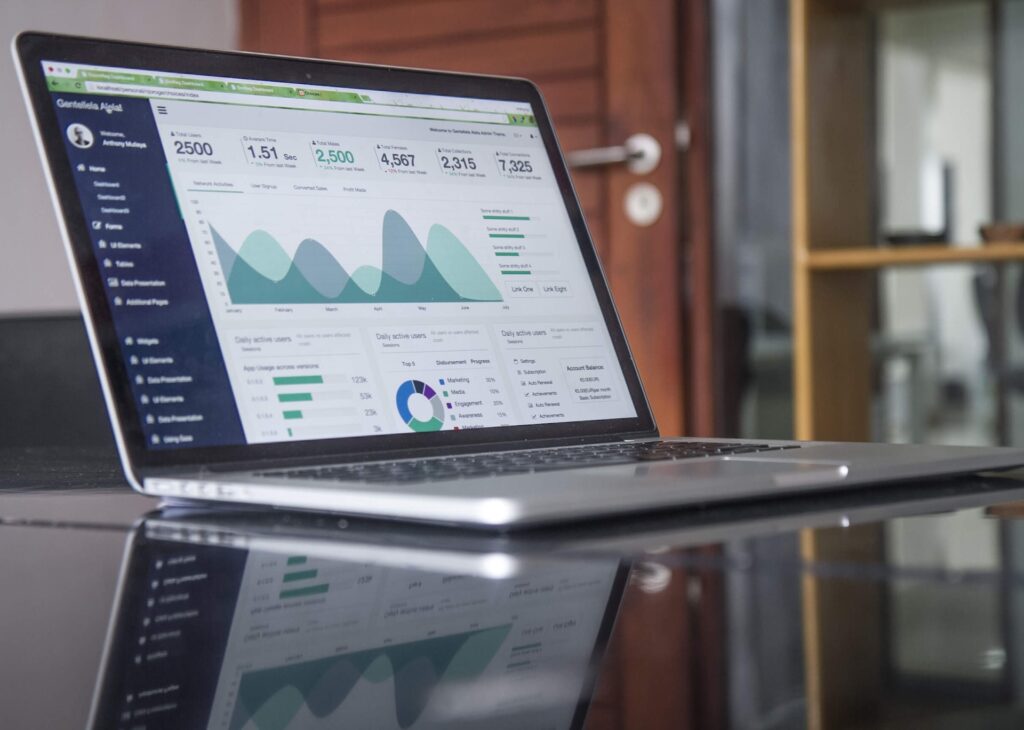
Are you striving to take your marketing strategy to unprecedented heights in 2023? If so, explore the possibilities of personalization in your marketing to create personalization that not only produces optimal results, but also increases customer loyalty. You need to learn the art of designing a personalized marketing strategy. This comprehensive guide will teach you the basics of a successful personalized marketing campaign, from collecting customer data to crafting customized messages and offers. I will explain the steps. Don’t ignore this important trend in digital marketing, take advantage of it today.
What is Personalization in Marketing?
At its core, personalization in marketing entails leveraging customer data to customize messaging and offers to individual consumers, ranging from bespoke emails and tailored product recommendations to precisely targeted advertising and bespoke website content. The objective of personalized marketing is to establish a more profound and authentic connection with your target audience, augment customer engagement, and, in turn, drive more conversions. By providing a more personalized experience, you can cater to the individual preferences and tastes of your customers, thereby creating a heightened sense of loyalty and affinity for your brand.
Benefits of personalization in marketing
- Improved customer retention: Personalized marketing campaigns create more engaging and relevant experiences for customers, resulting in higher open, click, and conversion rates.
- Improved customer satisfaction: By tailoring messaging and offers to each customer’s unique interests and needs, you can improve their overall satisfaction with your brand.
- Enhanced brand loyalty: Personalization helps customers to feel seen, heard, and valued, which in turn fosters a sense of trust and loyalty towards your business. Customers who feel valued and understood are more likely to continue doing business with your brand, resulting in increased repeat business and ultimately higher revenue.
- Better ROI: Personalized marketing campaigns have proven to be more effective in increasing conversions, resulting in higher returns on marketing spend. By tailoring your messages and offers to each customer’s specific needs and preferences, you can create a more engaging and relevant experience. This makes them more likely to convert and become customers, ultimately increasing the return on investment in your marketing efforts. By comparison, generic unified marketing campaigns are often less effective at driving conversions and cost more to get the same results as personalized campaigns.
- Greater customer insights: By using data analytics tools and techniques to track customer interactions with your brand, you can gather valuable insights into their behavior and preferences. This can include data on their demographics, purchase history, website interactions, and social media activity, among other things. Armed with this information, you can tailor your marketing campaigns to better resonate with your target audience, resulting in higher engagement and conversions.
How to Create a Personalized Marketing Strategy
Here are some key steps to get started:
1. Collecting Customer Data
Creating a customized marketing strategy that resonates with your audience requires gathering and reviewing a wealth of customer information. This information can be collected from a variety of sources, including demographics, purchase history, website activity, social media activity, and various other touchpoints with which customers interact. Examining these disparate data sets together can provide valuable insight into customer behavior, preferences, and pain points. You can use these insights to develop effective marketing strategies that align with your customers’ needs and desires. In today’s highly competitive business environment, the ability to curate a noise-cutting, data-driven marketing strategy is essential for brands looking to build lasting connections with their audiences.
Arguably the most ubiquitous approach to collecting customer data is through website tracking. This entails monitoring a user’s activities on your website, ranging from their browsing patterns and the duration of their stay to the actions they undertake. By gathering and parsing this data, you can gain granular insights into your customers’ behavior and preferences, which can then be utilized to fine-tune your messaging and tailor your offers to their needs. Armed with this rich trove of customer information, you can also identify areas of improvement and optimize your website’s user experience, with the objective of bolstering customer engagement and conversion rates. By capitalizing on the power of website tracking, businesses can unlock a wealth of benefits that enable them to stay ahead of the curve and thrive in today’s dynamic business environment.
Additionally, there are various tools and platforms at your disposal for robust data analysis. As one of the most popular website tracking and data analysis tools, Google Analytics allows you to monitor website traffic, user behavior and conversion rates like never. This feature-rich platform can generate detailed reports, visualize data through easy-to-use dashboards, and gain valuable insight into your customer’s journey through your website. For advanced data analytics, there are various third-party platforms such as Mixpanel, Segment and Kissmetrics that offer sophisticated capabilities ranging from advanced analytics and real-time data tracking to cohort analysis and user segmentation.
2. Segmenting Your Audience
Once you’ve collected your customer data, it’s important to organize your audience into distinct groups based on common attributes. This facilitates the development of customized messages and bespoke promotions tailored to each group’s unique tastes and needs. This segmentation can be based on a variety of factors, including demographics, geographic location, psychological behavior, purchase history, and website interaction patterns. For example, if you run an e-commerce business that sells both men’s and women’s clothing, grouping your audience by gender effectively reflects each group’s unique style tendencies and interests. You can custom design his campaign. Similarly, segmenting your audience by purchase history can offer targeted promotions and cross-selling opportunities to consumers who are more likely to accept your offer. By harnessing the power of audience segmentation, you can initiate focused marketing initiatives that drive customer retention, loyalty and increased revenue, driving lasting business success.
There are various methods of audience segmentation, including demographic segmentation, behavioral segmentation, and psychographic segmentation. Demographic segmentation classifies your audience based on characteristics such as age, gender, and location. Behavioral segmentation is used to target audiences based on behavior such as: Purchase history or website activity. Psychographic segmentation classifies audiences based on personality, values, and lifestyle.
3. Tailoring Messaging and Offers
By leveraging customer data and audience segments, we can tailor our messaging and advertising offerings to each consumer’s specific preferences and interests. This level of customization can range from highly personalized emails that use the customer’s name and reflect past purchase behavior, to targeted product recommendations tailored to the customer’s unique needs and preferences. There is a shape, It may also include the use of programmatic advertising, which serves relevant advertisements to consumers based on web activity and other user data. The possibilities for customized marketing initiatives are nearly endless, as businesses use segmentation to launch innovative campaigns to drive customer engagement and loyalty. By investing in personalized marketing strategies, businesses can create a sense of belonging and connection with their customers, enhance their brand image, and ultimately increase long-term growth and profitability.
The ever-expanding landscape of marketing tools and platforms continues to offer businesses a plethora of options for crafting personalized messaging and offers that resonate with their target audience. Foremost among these are email marketing platforms, including the likes of Mailchimp and Campaign Monitor, which provide businesses with the ability to create highly targeted email campaigns that speak directly to specific customer segments.
Equally important are advertising platforms such as Facebook Ads and Google Ads, which enable businesses to create bespoke advertising campaigns that leverage customer data to optimize reach and impact. By honing in on the needs and interests of specific customer segments, businesses can create messaging and offers that are uniquely tailored to individual preferences, thereby fostering deeper connections with their audience.
Indeed, there are many examples of effective personalized messaging and offers that have proven successful in driving engagement and conversions. For instance, music streaming giant Spotify leverages its vast troves of data to create personalized playlists for each user, based on their unique listening history. Meanwhile, beauty retailer Sephora utilizes customer data to provide personalized product recommendations, tailored to individual purchase histories and browsing behaviors.
4. Testing and Optimizing Your Campaigns
Once you have crafted your personalized marketing campaigns, the next crucial step in maximizing their effectiveness is to test and optimize them. This entails tracking key performance metrics, such as open rates, click-through rates, and conversion rates, and using the insights gleaned to make data-driven adjustments that enhance overall campaign performance.
The benefits of testing and optimization are manifold. By systematically identifying and addressing areas of weakness, businesses can improve their ROI and drive increased engagement and conversions. Moreover, the iterative nature of testing and optimization allows businesses to fine-tune their campaigns over time, producing ever-more-effective messaging and offers that resonate with their target audience.
There are many methods available for testing and optimizing personalized marketing campaigns. A/B testing, for instance, involves creating two distinct versions of a campaign and pitting them against one another to determine which performs better. This approach can help businesses identify key messaging and design elements that drive the most engagement and conversions. Alternatively, multivariate testing allows businesses to test multiple variables at once, to identify the optimal combination of elements for a given campaign.
Conclusion
In summary, personalization in marketing is a key factor in business success. By collecting and analyzing customer data, segmenting your audience, and customizing your messages and offers, you can connect more meaningfully with your audience and drive more conversions. Start creating a personalized marketing strategy today and see the results for yourself.
Our website uses cookies to improve your experience. Learn more about: cookie policy



